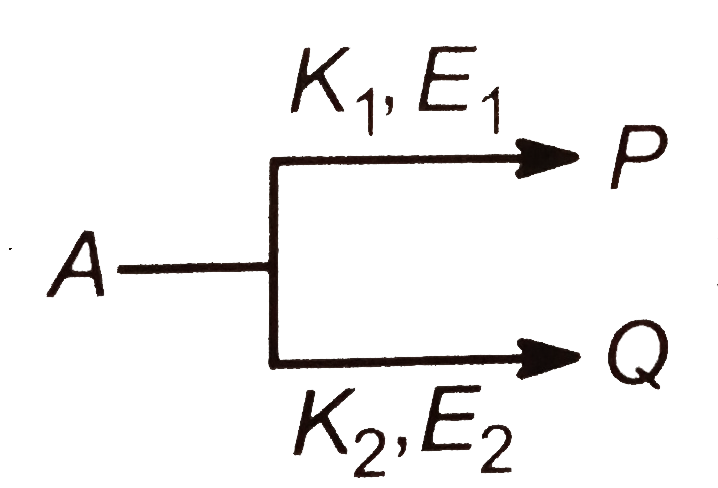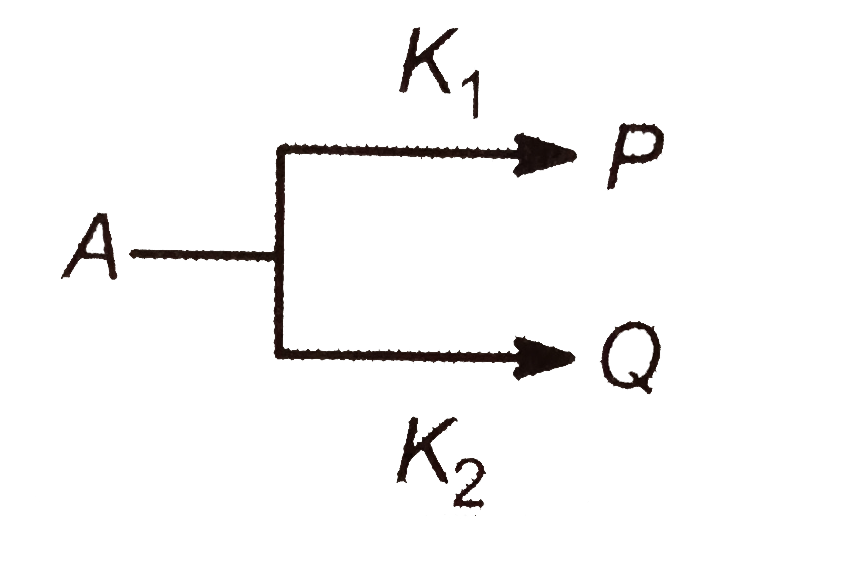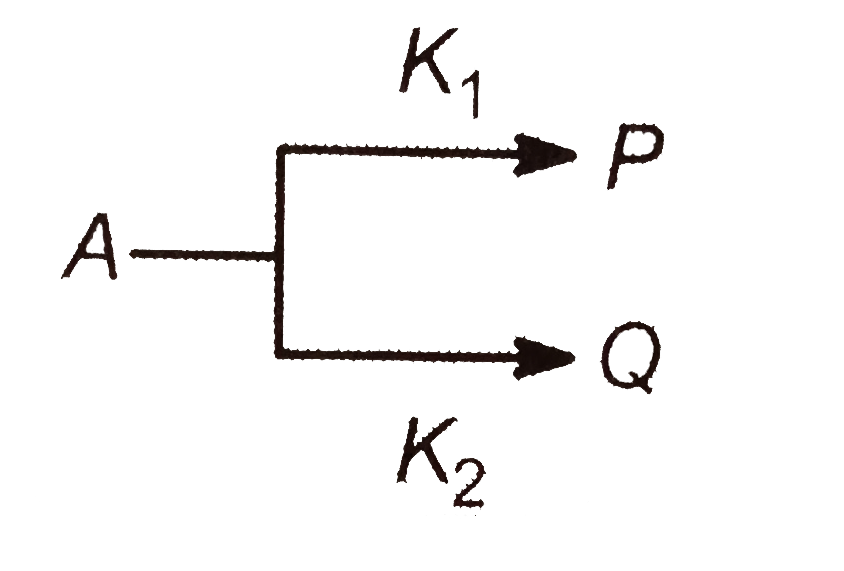Some times a reacant undergoes chemical/radioactive changes following two or more different paths to yield two or more different produces respectively. Such reactions are called parallel path reactions. If K1 and K2 are rate constans for the reaction of A follwing two parallel paths, then

Then Kav=K1+K2
For  if E1 and E2 are energy fo activations, then
if E1 and E2 are energy fo activations, then
ETotal=E1+E2
ETotal=E1−E2
ETotal=K1E1+K2E2
ETotal=K1E1+K2E2K1+K2
The correct Answer is:d
Kav=K1+K2
ATe−ET/RT2=A1e−E1/RT2+A2e−E2/RT2 ....(1)
Differentiating eqn. (1)
AT.ETRT.e−ET/RT2=A1.E1RT.e−E1/RT2+A2E2RTe−E2/RT2
KavETRT=K1E1RT+K2E2RT
(K1+K2)ETRT=K1E1RT+K2E2RT
∴ET=K1E1+K2E2K1+K2
Topper's Solved these Questions
- RADIO ACTIVITYBOOK - P BAHADURCHAPTER - RADIO ACTIVITYEXERCISE - Exercies 8
16 Videos
- RADIO ACTIVITYBOOK - P BAHADURCHAPTER - RADIO ACTIVITYEXERCISE - Exercies 9
99 Videos
- RADIO ACTIVITYBOOK - P BAHADURCHAPTER - RADIO ACTIVITYEXERCISE - Exercies 6
14 Videos
- MOLE AND EQUIVALENT CONCEPTBOOK - P BAHADURCHAPTER - MOLE AND EQUIVALENT CONCEPTEXERCISE - Exercise 9 Advanced numerical problems
61 Videos
- REDOX REACTIONSBOOK - P BAHADURCHAPTER - REDOX REACTIONSEXERCISE - Exercise(8) Statement:Explanation type problems
19 Videos
Similar Questions
Knowledge Check
Some times a reacant undergoes chemical/radioactive changes following two or more different paths to yield two or more different produces respectively. Such reactions are called parallel path reactions. If K1 and K2 are rate constans for the reaction of A follwing two parallel paths, then

Then Kav=K1+K2
If average life of A for p is T1 and for Q is T2 then:ATav=T1+T2BTav=T1T2T1+T2CTav=T1+T2T1T2DTav=K1T1+K2T2Some times a reacant undergoes chemical/radioactive changes following two or more different paths to yield two or more different produces respectively. Such reactions are called parallel path reactions. If K1 and K2 are rate constans for the reaction of A follwing two parallel paths, then

Then Kav=K1+K2
Which one of the following is correct for the above reaction:AFractionl yield of p=K1K2BFractional yield of p=K1+K2KavCFractional yeild of p=K1KavDFractional yield of p=K2KavActivation energy (Ea) and rate constant (K1 and (K2) for a chemical reaction at two different temperatures T1 and T2 are related by:
AIn K2K1=EaR(1T1−1T2)BIn k2k1=−EaR(1T2−1T1)CIn k2k1=−EaR(1T2+1T1)DIn k2k1=EaR(1T1−1T2)
Activation energy (Ea) and rate constants (k1 and k2) of a chemical reaction at two different temperatures (T1 and T2) are related by
View SolutionActivation energy (Ea) and rate constant (k1andk2) of chemical reaction at two different temperatures (T1andT2) are related by :
View SolutionActivation energy (Ea) and rate constants (k1 and k2) of a chemical reaction at two different temperatures (T1 and T2) are related by
View SolutionActivation energy (Ea) and rate constants (k1 and k2) of a chemical reaction at two different temperatures (T1 and T2) are related by
View SolutionThe rate constant (K') of one reaction is double of the rate constant (K") of another reaction. Then the relationship between the corresponding activation energies of the two reactions (E′aandE''a) will be
View Solution
